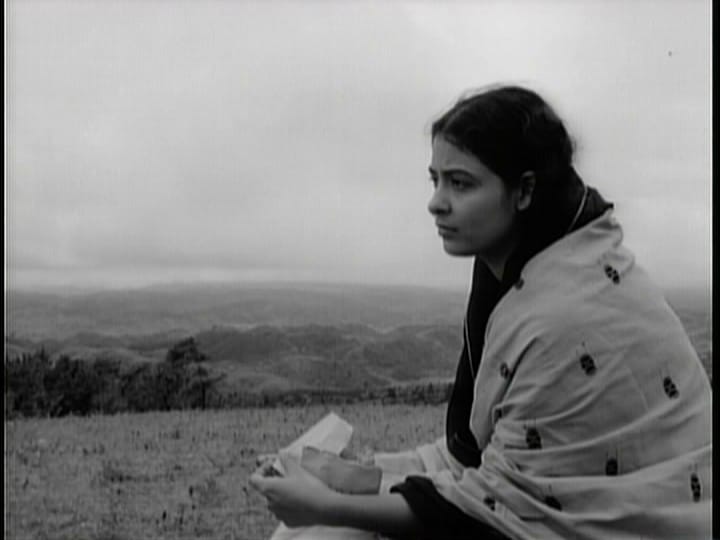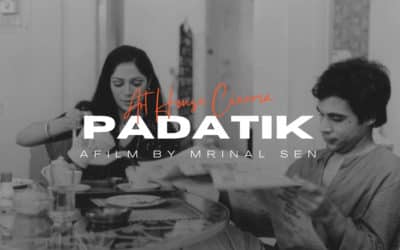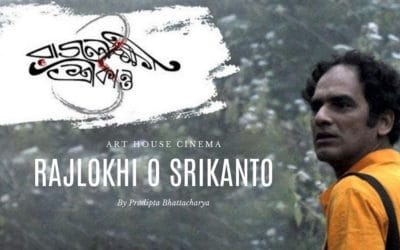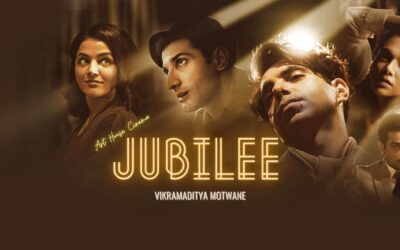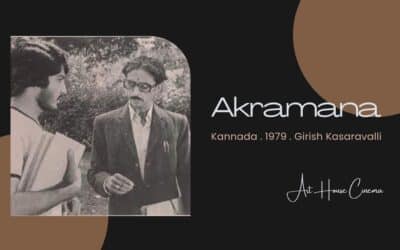Meghe Dhaka Tara (Eng: The Cloud Capped Star) is a 1960 Bengali film written and directed by Ritwik Ghatak. The film is based on a Bengali novel by the same name by Shaktipada Rajguru. Meghe Dhaka Tara is the first from the Partition trilogy by Ghatak, the other two being Komal Gandhar (1961) and Subamarekha (1962)
Cast
- Supriya Choudhury —————— Neeta
- Anil Chatterjee ———————— Shankar (Elder Brother)
- Niranjan Ray ————————— Sanat
- Gita Ghatak —————————- Gita
- Bijon Bhattacharya —————— Father
- Gita Dey ——————————— Mother
- Dwiju Bhawal ————————— Mantu
- Gyanesh Mukherjee —————– Banshi
- Ranen Ray Choudhury ————– Baul Singer
Story
Although it is not explicitly shown, the film is based on the partition of India and how the refugees from then East Bengal (Pakistan) coped with it. Meghe Dhaka Tara is the story of Neeta, a beautiful and talented young girl from a middle-class family in East Bengal who has now been living in a refugee shanty on the outskirts of Calcutta. Her elder brother is unworldly and cares little in life other than music, so it comes to Neeta to bear the burden of supporting her family. Self-sacrificing and hard-working, she keeps working even when her own family members take her for granted and hardly recognize her contribution. Undeterred by the tragedies that struck her, losing her fiance, job, and then contracting dangerous Tuberculosis, she still wants to live …
Commentary
Meghe Dhaka Tara happens to be the most acclaimed film of Ritwik Ghatak and not without reason. This rural drama can be considered a meditative take on poverty and family dysfunction in the middle of a refugee slum of Calcutta. Ghatak manages to boil the human and survival instincts to their most basic ruthless form. There is hardly any room for lofty ideals or sentimental altruism in the world he creates; mourn what one must, and do what one must do to survive. This film, realistic to the point of being almost cruel, treats ideas and sentiments as luxuries which, as the leftist Director believes, must be done away with. This treatment makes this film, one of Ghatak’s, and Indian Cinema’s, greatest tragedies.
Unlike Ray and Kurosawa, who have sometimes been criticized for looking at life from a Western point of view, Ghatak is less worried about frames and technicalities. To express on celluloid, the un-expressible, he instead decides to use Outdoor locations, unrealistic lights and shadows, and a peculiar form of editing, with violent jump cuts and clashing compositions. While the film is often called bleak and angry, there is a Sitar playing in the background trying to soothe the fraying nerves, and this is just one of the many extreme contradictions of the film which Ghatak keeps putting forth in a precise and deliberate manner. In the end, the audience becomes puppets in the hands of the master storyteller and he controls their emotions as if they were strings attached to his fingers.
While Meghe Dhaka Tara is essentially a Director’s film, the cast manages to hold on to their own. Supriya Choudhury as young Neeta is particularly excellent and Niranjan Ray as Sanat is very impressive as well.
Awards and Recognition
- Best Masterpiece Film, Pusan Film Festival (1999)
Reviews
- “Ritwik Ghatak’s new film ‘Meghe Dhaka Tara’…constitutes a glorious triumph for the rising group of young filmmakers who have been striving to rescue the cinema from the quagmire of escapist entertainment… His entire approach is realistic to a poetic degree and he shows exceptional imagination and warm sensitiveness in building up the climate situations which leave an inedible impression on the audience mind.” – Amrita Bazar Patrika, 22 April 1960
- “As a film-maker, Ritwik Ghatak has his forte, he has his originality. If his style is to be categorized, well, it’s a new dimension of the Neo-Realist school. Countrymen have already experienced a bit of it in his previous films such as ‘Ajantrik’ and ‘Bari Theke Paliye’. ‘Meghe Dhaka Tara’ has an abundance and reached the pinnacle of it.” – Jugantor,22 April 1960.
- “It is the cry of the dying girl in Meghe Dhaka Tara which echoes through the hills, our right to live… The breaking up of society is visualised as a three-way division of womanhood. The three principal woman characters embody the traditional aspects of feminine power. The heroine, Neeta, has the preserving and nurturing quality; her sister, Geeta, is the sensual woman; their mother represents the cruel aspect.” – Kumar Sahani
- “By watching Ghatak’s Meghe Dhaka Tara, I derived that pleasure by which the mind gets mesmerized by the sad aspect of life and gets purified by the artistic communication’s receiving and protesting. Maybe that’s called the essence of tragedy by the pundits.” – Bishnu Dey
- “Prometheus had to be punished as he learnt how to make fire. Memory let Neera know that being a woman, she wanted to transcend the prison of womanhood. She must be punished. To attack establishment means the counterattack from the establishment; Ritwik Ghatak and his heroine wanted to gift that example to history. This death is more living than life.” – Sanjay Mukhopadhyay
Meghe Dhaka Tara On YouTube
For Online Viewing
Derek Malcom on Ritwik Ghatak’s Meghe Dhaka Tara


